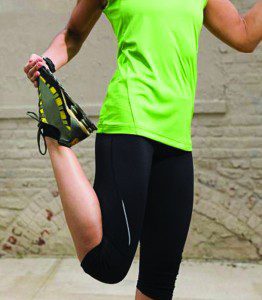By Dr. John C. Kagan, M.D.
 As the largest joint in the body, the knee is prone to injury. According to the American Academy of Orthopedic Surgeons, knee injuries lead to more visits to orthopedic surgeons than any other problems. As we age, the cartilage that protects the bones begins to deteriorate in the knees. As this change occurs, the risk of developing osteoarthritis, also known as “wear-and-tear” arthritis, becomes greater.
As the largest joint in the body, the knee is prone to injury. According to the American Academy of Orthopedic Surgeons, knee injuries lead to more visits to orthopedic surgeons than any other problems. As we age, the cartilage that protects the bones begins to deteriorate in the knees. As this change occurs, the risk of developing osteoarthritis, also known as “wear-and-tear” arthritis, becomes greater.
Major reasons for knee pain include overuse injuries to the meniscus and knee ligament injuries to the ACL (anterior cruciate ligament), MCL (medial collateral ligament), and PCL (posterior cruciate ligament). Vigorous activities, such as running, basketball or soccer, can contribute to placing greater stress on the knee joint. Other factors, such as obesity and muscle loss in the body, can also leave people highly vulnerable to knee pain as they age. Consider implementing a variety of low-impact, knee-friendly activities, such as swimming, walking or cycling, into your exercise routine to help protect your joints from overuse. Regardless of the activity, it is essential to exercise wisely and follow proper techniques in order to avoid injuring the knee.
Stretching is a critical component to protecting the knees, and many knee conditioning treatment programs will incorporate a combination of stretching and flexibility to target muscle groups such as the quadriceps and hamstrings, abductors and adductors, and buttocks muscles. The American Academy of Orthopedic Surgeons’ knee conditioning program suggests the following stretching exercises:
1. Heel Cord Stretch (this stretch should be felt in the calf and heel muscles)
a. Stand facing a wall with the unaffected leg forward and slightly bent at the knee.
b. Place hands on the wall for support as you step the affected leg back and behind you, with the heel flat.
c. Keep the affected leg straight and both heels planted on the floor and press your hips forward.
d. Hold the stretch for 30 seconds and then relax for 30 seconds. Complete two sets of four repetitions.
2. Standing Quadriceps Stretch (this stretch should be felt in the quadriceps muscle)
a. Stand near a chair or wall and place one hand on the chair or wall for support.
b. Bend your knee and bring the heel up toward your buttock.
c. Grasp your ankle with your hand and gently pull your heel closer to your body with the bent knee pointing down towards the ground.
d. Hold for 30 to 60 seconds. Repeat with the opposite leg for two or three repetitions.
3. Supine Hamstring Stretch (this stretch should be felt in the hamstrings)
a. Lie on the floor with both legs bent.
b. Lift one leg off the floor and bring the knee toward your chest with your heel pointing up to the ceiling and leg as straight as possible.
c. Clasp your hands behind your thigh below the knee.
d. Pull the leg gently in towards your head, until you feel the stretch.
e. Hold for 30 to 60 seconds. Repeat with the opposite side for two or three repetitions.
Listen to your body and be sure to consult a doctor when knee pain occurs. If diagnosed early, limiting physical activities or participating in physical therapy may be prescribed. For other patients with more advanced cases, knee replacement surgery may be the best option. Speak to an orthopedic surgeon about treatment options, as well as which exercises are best for your body to ensure that your fitness routine is designed to promote wellness while lowering the risk for injury.
If you are experiencing joint pain, it is important to speak with an orthopedic specialist to discuss your options for pain relief. Dr. John C. Kagan and his staff are ready to answer all of your questions. Dr. Kagan has more than 30 years of experience as an orthopedic surgeon and sports medicine specialist treating patients in Southwest Florida. He specializes in treating patients with knee, shoulder and hip pain, as well as general orthopedics and hand surgery. For more information, visit www.kaganortho.com or call 239-936-6778.









